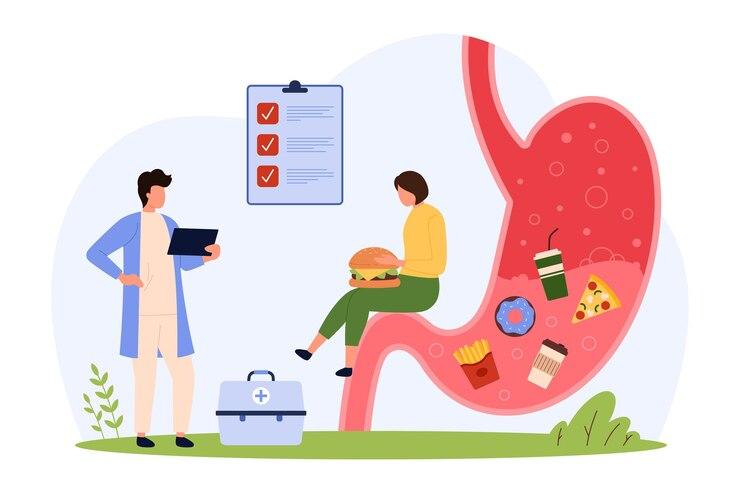Diabetic Gastroparesis Treatment Market Analysis Uncovers Emerging Therapies and Growth Pathways

Diabetic gastroparesis is a chronic gastrointestinal disorder characterized by delayed gastric emptying in the absence of mechanical obstruction, commonly seen in individuals with type 1 and type 2 diabetes. The diabetic gastroparesis treatment market has been gaining attention as healthcare providers seek effective solutions to alleviate the condition’s debilitating symptoms. A detailed analysis of this market reveals promising developments, dynamic growth opportunities, and key challenges influencing its future trajectory.
Rising Prevalence and Market Drivers
The increasing global prevalence of diabetes significantly contributes to the expansion of the diabetic gastroparesis treatment market. According to the International Diabetes Federation, approximately 537 million adults were living with diabetes in 2021, and this number is expected to rise. As a result, a higher incidence of complications like gastroparesis has created strong demand for treatment solutions. The analysis identifies that patients with poorly controlled blood sugar levels are at increased risk of developing this gastrointestinal condition, propelling market growth for effective symptom management.
Additionally, growing awareness among patients and healthcare professionals about diabetic complications has fueled earlier diagnosis and increased therapeutic interventions. Enhanced diagnostic methods, especially gastric emptying scintigraphy, further contribute to more accurate treatment paths.
Therapeutic Advancements and Drug Development
The market is witnessing an upswing in the development of advanced pharmacological therapies. Traditionally, treatment options included prokinetic agents like metoclopramide and erythromycin. However, limitations such as adverse effects and reduced long-term efficacy have led to an evolving therapeutic landscape. Ongoing clinical trials and research aim to develop newer agents with targeted mechanisms and improved safety profiles.
Emerging therapies such as relamorelin, a ghrelin receptor agonist, have shown positive results in improving gastric emptying and symptom relief. Market analysis indicates that such innovations are likely to reshape standard care protocols and boost pharmaceutical investments. Companies are also exploring combination therapies that simultaneously manage nausea, bloating, and abdominal pain, offering comprehensive relief to patients.
Market Segmentation and Key Insights
The diabetic gastroparesis treatment market is segmented based on drug class, route of administration, end user, and region. Drug classes primarily include prokinetics, antiemetics, and botulinum toxin injections. The analysis indicates that oral formulations dominate the market due to ease of use and patient preference.
Hospitals, specialty clinics, and homecare settings serve as major end users. Among these, hospitals lead in terms of treatment adoption, primarily due to the availability of advanced diagnostic tools and multidisciplinary care teams. However, the trend of personalized medicine and home-based care is gradually increasing, supported by digital health monitoring tools.
Geographically, North America holds the largest share of the diabetic gastroparesis treatment market due to advanced healthcare infrastructure, high diabetes prevalence, and strong reimbursement policies. Meanwhile, the Asia-Pacific region is emerging rapidly, driven by increasing healthcare investments, large diabetic population base, and improved access to medical services.
Competitive Landscape and Strategic Initiatives
The market is moderately consolidated, with key players focusing on product innovation, strategic collaborations, and regulatory approvals. Notable companies in the space include Evoke Pharma, Takeda Pharmaceuticals, Ipsen, Teva Pharmaceuticals, and Neurogastrx. A focused analysis of corporate strategies highlights increased R&D investment and licensing agreements as common growth tactics.
For instance, Evoke Pharma’s nasal spray formulation of metoclopramide (Gimoti) offers an alternative route of administration for patients with nausea and vomiting who cannot tolerate oral medications. Such innovations are expected to broaden treatment access and patient compliance.
Challenges and Limitations
Despite promising growth, the market faces significant hurdles. Drug safety concerns, limited long-term efficacy, and the absence of FDA-approved therapies specifically for diabetic gastroparesis continue to restrict treatment adoption. Moreover, the multifactorial nature of the disease makes it difficult to standardize treatment approaches.
Reimbursement limitations in certain regions and a lack of awareness about available treatment options also pose barriers to widespread adoption. An in-depth analysis reveals that overcoming these challenges will require collaborative efforts between pharmaceutical companies, regulators, and healthcare providers.
Future Outlook and Conclusion
The diabetic gastroparesis treatment market is on a transformative path, backed by scientific innovation and a pressing need for effective solutions. Advancements in precision medicine, biotechnology, and digital health monitoring tools are expected to improve disease management. As patient-centric models gain momentum, pharmaceutical firms that prioritize research and offer tailored treatment options will likely emerge as market leaders.
In conclusion, a comprehensive analysis of the diabetic gastroparesis treatment market shows an ecosystem rich in opportunity, innovation, and potential. Stakeholders that adapt swiftly to technological and clinical developments will shape the future of gastroparesis care.
- Art
- Causes
- Crafts
- Dance
- Drinks
- Film
- Fitness
- Food
- Games
- Gardening
- Health
- Home
- Literature
- Music
- Networking
- Other
- Party
- Religion
- Shopping
- Sports
- Theater
- Wellness


